This October/November, we’re taking a trip back in time to review the eighth season of The X-Files and the first (and only) season of The Lone Gunmen.
Salvage is another mid-season “monster of the week” that doesn’t quite work.
As with Surekill, it is possible to imagine the interplay between David Duchovny and Gillian Anderson elevating this episode had it been produced in the seventh season, as was originally planned. The Doggett and Scully pairing lacks that easy dynamic that made so many generic episodes flow so easily. That is not to say that Robert Patrick and Gillian Anderson don’t work well together, simply that they don’t replicate the once-in-a-lifetime chemistry that Randy Stone found with David Duchovny and Gillian Anderson.
That said, Salvage has more severe problems than Badlaa or Medusa. In many respects, Salvage feels like a first season episode of the show that arrived seven years too late – in terms of tone, design and aesthetic. There is a clumsiness to the execution, an awkwardness to the presentation, that feels like the show has forgotten many of the lessons that it learned in its time on television. If it is fair to argue that the eighth season is as much the first season of a new show as the last season of the old one, Salvage is the most “first season” episode of the bunch.
Salvage has a host of interesting concepts and ideas, but it lacks the skill and confidence that the show would need to pull off a story like this. Salvage is one of the handful of season eight stories that would arguably have worked better in season seven, albeit only barely.
It is hard to articulate exactly how Salvage feels like a first season episode. It is a combination of factors. Part of it is the direction by Rod Hardy. Hardy is responsible for the direction of two of the eighth season’s strongest episodes, Roadrunners and Vienen. Part of the success of those episodes is the way that Hardy draws on all manner of classic horror touches, from dutch angles to use of silhouettes to copious back-lighting. However, Salvage simply does not work as well with Hardy’s grindhouse approach.
The sequences set at “Southside Salvage” are beautifully evocative, capturing the dystopian and body horror undertones of the episode. For a moment, it appears that Robert Patrick has accidentally wandered onto the set of the opening scene from Terminator 2: Judgment Day. If the entire episode were set in and around Southside Salvage, as the title would suggest, the episode might flow better. The problem is that Salvage ventures quite a bit away from that. Once the episode ventures to Chamber Technologies, it feels lost.
It doesn’t help matters that Hardy is extremely fond of the cheesy “monster shot” of Raymond Pearce attacking the camera while groaning and stretching his hand out in front of him as if to attack at the audience. It is classic jump scare, one that invites the audience to wonder whether the monster can suddenly see them. It is also, however, a very corny horror shot. While Hardy made great use of those sorts of compositions in Roadrunners, the sequences of Pearce attacking the camera seem almost quaint and old-school.
Speaking of old-school, Chamber Techonologies feels like a company that escaped from the first or second season – back when The X-Files was doing “technology-based horror” on a more frequent basis. Salvage feels like another “science out of control” episode that could have been produced alongside Ghost in the Machine or Soft Light. The laboratory setting recalls early episodes like Space or Roland. The show grew away from these sorts of stories, with one or two exceptions, after the second season.
It is not only the science technology aspect of Salvage that contributes to that first season feeling. After all, the show has done similar science-based standalones in episodes as diverse as Synchrony, The Post-Modern Prometheus, Kill Switch and First Person Shooter. However, the way that Salvage chooses to tell its story is very much rooted in the first season. The laboratories of Chamber Technologies look like sets from the first season, with lots of generic grey walls and metal panels, with flashes of primary colours to keep things visually striking.
It recalls a lot of Jerrold Freedman’s direction of Ghost in the Machine. To be fair, Ghost in the Machine looked like a surreal oddity at the time, particularly measured against episodes like The Jersey Devil or Shadows. After all, Ghost in the Machine arrived before The X-Files had really established its desire to craft cinematic visuals on a television budget. What was notable in the first season looks rather bland eight years later. Considering the show’s lofty visual ambitions, Salvage looks very much like a middle of the road television episode.
There are other production choices that make Salvage feel like a first season episode that was somehow locked in a time capsule and hastily reworked to include Robert Patrick. There is a very rough quality to the episode, as if the production team have forgotten everything they have learned about making The X-Files over the past six years. Even Mark Snow’s synth-heavy score harks back to his earlier compositions for the show, feeling a lot grittier than the more polished aesthetic of the show’s later seasons.
Even the episode’s basic structure seems to hark back to the first season of the show, with Doggett and Scully tracking down a man who seems to be enacting a terrible revenge from beyond the grave. The X-Files was always fond of supernatural revenge stories – after all, Badlaa is coming up – but it was particularly fond of them during the first season. Indeed, a whole host of supernatural revenge stories were clustered towards the end of the year (Lazarus, Young at Heart, Born Again, Roland) seemed to exhaust that particular story hook quite quickly.
Then again, the eighth season is particularly suited to these sorts of stories from a thematic perspective, with a recurring fixation on the idea of death and rebirth. Raymond Pearce is just one character who is killed and reborn over the course of the eighth season, and who finds himself struggling to reclaim his humanity as he becomes more and more machine. In some ways, Pearce’s transformation in Salvage prefigures the eighth season mythology in the way that first season episodes like Eve or Shapes prefigure the show’s later mythology.
Even the closing scene feels like a throwback to an earlier era of the show. As with Surekill, Salvage ends with Scully and Doggett ruminating on the nature of humanity and machinery. However, this conversation is overlaid with a sequence of Raymond Pearce willingly consigning himself to the (literal) scrapheap. Scully’s dialogue does not sound conversational, instead looped over the scene like narration. Gillian Anderson’s delivery is akin to those purple prose monologues associated with the early years of the show.
Although the conversation is taking place in the street, it feels like the episode could easily have cut to Scully writing at her computer. “Nora Pearce may have been right,” Scully concedes. “Her husband died, or at least his body did. Whatever killed those people was an abomination of a man. It was a machine.” Doggett prompts the episode’s big philosophical observation, but the dialogue could easily be repurposed to omit his side of the conversation. “What drove Ray to kill is also what saved those people. Some flicker of humanity.”
There is also something just a little bit awkward about the dynamic between Doggett and Scully over the course of the episode. Doggett seems decidedly antagonistic and confrontational towards Scully’s crazy pseudo-scientific theories. “You know I hate to ruin your beautiful theory with ugly facts but stop to examine the incident,” he insists in their first scene, which is a somewhat blunt rebuke to her line of thought. Of course, the facts of “the incident” certainly don’t support a more rational interpretation.
One of the more refreshing aspects of Doggett’s introduction has been the way that the show has generally avoided putting Doggett and Scully at odds with one another. In Patience, Doggett stressed an understanding of how the narrative logic of The X-Files is supposed to work – that there are generally “leaps” required to solve these cases, but those leaps are antithetical to Doggett’s world view. Doggett adopts a healthy skepticism, but he generally defers to Scully’s superiority and experience in such matters.
It is not a bad approach, given that Doggett is a new character whose very presence upsets certain fans and the internal logic of The X-Files dictates that Scully will almost always be right. Unless there is an incredibly strong case to be made for a rational and grounded explanation, things move smoothest if Doggett is willing to let Scully do her thing while occasionally arching his eyebrows and seeming surprised. Some of the best Doggett moments of the eighth season are based on his willingness to trust and his efforts to meet Scully halfway.
In Roadrunners, he doesn’t question the parasitic brain slug that he pulls from Scully’s neck; he just grabs it, throws it, and shoots it. In Via Negativa, he manages to crack the case of Anthony Tipet by essentially playing through “what would Scully do?” Even in the context of Surekill, Doggett tries really hard to get on board with Scully’s “the killer used X-rays” theories, to the point where he even speculates about lugging an X-ray machine around. At his best, the character tries to understand the show he has inherited.
In contrast, the version of Doggett present in Salvage seems more openly antagonistic towards Scully’s pseudo-science. When he quipped about “Clark Kent” in Surekill, it seemed like an obvious and immediate response to the suggestion that the killer had X-ray vision. Here, Doggett takes every opportunity to insist that Scully must be crazy. “What are you saying?” he asks over the phone. “Ray Pearce has become some kind of metal man? Because that only happens in the movies, Agent Scully.” The same might be said of parasitic brain slugs and man-bats.
Of course, that particular line of dialogue is a nod to Robert Patrick’s most iconic role, that of a metal man in Terminator 2: Judgment Day. Although Salvage was developed before Patrick was cast, the production team could not resist a slight nod to that earlier role:
This episode, with a character whose body is made of dense metal alloys, was developed before actor Robert Patrick was cast in the show. Patrick previously played an assassin of liquid metal in the 1991 film Terminator 2: Judgement Day. The line about “metal men only being in movies” was written in homage to him.
One of the more interesting aspects of the eighth season is its willingness to acknowledge (and even draw attention to) Robert Patrick’s established screen persona rather than treating him as a blank slate.
Salvage is notable as the last episode of The X-Files to be credited to writer Jeffrey Bell before he joined that Angel production team the following season. Bell’s strongest X-Files episodes tended to be lighter in nature; he produced The Rain King during the sixth season and The Goldberg Variation during the seventh. Although Bell had written an effective scary X-Files episode with Signs and Wonders, the difficulties with Alpha and Salvage suggest that these types of stories were not where Bell’s strengths lay as a writer.
The more somber and solemn tone of the eighth season seems to play against Bell’s strengths. The “back-to-basics” horror approach of the eighth season generally worked quite well, but it could occasionally become oppressive and smothering. Salvage is an episode that feels like it takes its absurdities just a little bit too seriously, to the point where there is no real fun to be had with the episode. For all its problems, at least Badlaa is able to have some fun with a suitably horrific (and completely nonsensical) case.
That said, there are a few interesting elements to Salvage. Most interestingly, the transformation of Raymond Pearce seems to foreshadow the eighth and ninth season arc concerning the supersoldiers – humans who are effectively turned into machines so that they might better fit within the process of colonisation. It is interesting that no attempt is made to tie Raymond Pearce to the larger arc of these last two seasons, perhaps suggesting that the production team had yet to settle on the direction that the second half of the eighth season would take.
Of course, this is not the first time that standalone stories have prefigured or foreshadowed developments in the mythology. Although the show tended to firmly delineate between its “monster of the week” and “conspiracy” episodes, there was some cross-pollination. In the first season, the use of cloning in Eve and of Native American folklore in Shapes marked out thematically-important ground to which the mythology would lay claim in Colony and Anasazi. In season seven, Sein und Zeit would build off the fourth season’s Paper Hearts.
There is an entire article to be written on the way that Jose Chung’s “From Outer Space” effectively reshaped the show’s mythology starting with Redux I. Subversively suggesting that the show’s entire mythology might be a lie, Darin Morgan’s postmodern masterpiece set up a large part of the fifth season arc. More than that, the production team incorporated several overt homages into the mythology; the diner scene from Redux II feels like an overt shout-out, as does the decision to title an eighth season episode This is Not Happening.
Despite the obvious similarities, it should be noted that there are considerable thematic differences between the use of Raymond Pearce in Salvage and of the supersoldiers later in the season. The supersoldiers arguably work best as a metaphor for the dehumanising impact of military training and experience – the fear that the army is a factory that turns young people into ruthless killing machines. The dehumanisation of Raymond Pearce feels like it plays on a host of other fears about the intersection of humanity and automation.
Salvage is heavily influenced by the 1989 Japanese cyberpunk body horror film Tetsuo: The Iron Man. Fusing Lynchian and Cronenbergian body horror with uniquely Japanese anxieties, Tetsuo: The Iron Man was a surrealist black-and-white film in which an unnamed character is transformed into a machine. In Japanese Horror Cinema, Jay McRoy argued that this horror subgenre commented on late eighties Japanese anxieties:
Like the many texts that comprise the apocalypse genre and the kaiju eiga, ‘techno-/body-horror’ films literalise the darker side of a process of nation-wide industrialisation largely orchestrated as a result of, and in direct response to, western military and cultural imperialism. As horror films, they contribute to a discourse of boundary violation and body invasion, graphically enacting, in the process, perhaps the most dreadful apocalypse of all – the perpetual intimate apocalypse of the human body revealed not as a consolidated and impregnable citadel, but as a flexible assemblage that disallows for illusions of corporal integrity or of the sovereignty of the human form.
In a way, this resonates with the themes of body horror running through the eighth season as a whole. Although Salvage never quite matches the surreality of Tetsuo: The Iron Man, the episode does capture some faint traces of its starkly dystopian tone in the sequences set at Southside Salvage; the desaturated piles of misshapen metal evoking many of the same fears and anxieties.
The cultural context of Salvage is quite different from that of Tetsuo: The Iron Man. The United States at the dawn of the twenty-first century is markedly different than Japan at the end of the eighties. This is perhaps reflected in the differences between the transformed characters; the anonymous victim in Tetsuo: The Iron Man is a business man, while Raymond Pearce is a blue collar worker eking out a living at a scrapyard. While the business man fears being synthesised with a machine, Raymond Pearce fears being replaced by a machine.
Industrialisation has always been presented as something of a threat to blue collar jobs. Early in the twentieth century, the mayor of Palo Alto wrote had taken it upon himself to write to President Hoover decrying the process of industrialisation as a “Frankenstein monster” that was “devouring our civilization.” That fear is given literal form here. The collapse of the automotive industry in Detroit during the second half of the twentieth century was the result of many factors, but increased automation was one of them.
During the late nineties, these fears were pushed to the fore once again. Writing in New Technologies and the End of Jobs in 1996, Jeremy Rifkin reflected:
A technology revolution is fast replacing human beings with machines in virtually every sector and industry in the global economy. Already, millions of workers have been permanently eliminated from the economic process, and whole work categories and job assignments have shrunk, been restructured, or disappeared. Global unemployment has now reached its highest level since the great depression of the 1930s. More than 800 million human beings are now unemployed or underemployed in the world. That figure is likely to rise sharply between now and the turn of the century as millions of new entrants into the workforce find themselves without jobs.
Fears that the working man was being made redundant had been around since the industrial revolution, but they were particularly strong.
Although the nineties had been a boom time for the economy, there was some anxiety about the health of the United States economy into the twenty-first century. The burst of the “dot com bubble” in March 2000 wiped almost a trillion dollars off the NASDAQ. The third quarter of 2000 saw the lowest increase in Gross Domestic Product since 1991. In an effort to ensure a “soft landing”, the United States Federal Reserve raised the interest rate six times between June 1999 and May 2000. January 2001 was a very anxious time for the United States economy.
With the benefit of hindsight, it has been argued that the first decade of the twenty-first century was essentially a “lost decade” for American industry as the sector shed a third of its jobs. Even outside of the industrial sector, American private sector job growth was practically non-existent for the first ten years of the new millennium. Salvage was broadcast in January 2001, on the very cusp of this rather bleak decade for the American working class. It seems to set the tone for the years ahead.
Of course, there were signs of the looming economic difficulties that could be discerned. Although the number of American men working trended down during the new millennium, it was just a continuation of a trend that had been in place since the late seventies:
The share of prime-age Americans (25 to 54 years old) who are working has been trending down since 2000. Among men, the decline began even earlier: the share of prime-age men who are neither working nor looking for work has doubled since the late 1970s, and has increased as much throughout the recovery as it did during the Great Recession itself. All in all, about one in six prime-age men today are either unemployed or out of the workforce altogether. This is what the economist Tyler Cowen calls “the key statistic” for understanding the spreading rot in the American workforce. Conventional wisdom has long held that under normal economic conditions, men in this age group—at the peak of their abilities and less likely than women to be primary caregivers for children—should almost all be working. Yet fewer and fewer are.
Although Salvage never explores this subtext as well as it might, elements of it bleed through into Salvage. Raymond Pearce is a blue-collar working man who finds himself transformed into an obsolete piece of machinery thanks to scientist who work in a lab where “everything’s done on computers.”
It is also interesting how Jeffrey Bell’s script ultimately subverts the expectation of a supernatural revenge thriller by revealing that Raymond Pearce’s death and resurrection was not the result of some sinister conspiracy by his co-workers or a large corporation, but instead the result of miscommunication and ineptitude. Raymond Pearce was not made a monster by design, but by virtue of being in the wrong place at the wrong time. His revenge is revealed to be ultimately futile and worthless.
Pearce’s attempts to exact a terrible revenge on those who wronged him is nothing but a meaningless gesture that offers no closure and only causes more suffering. “I don’t know how that happened, I swear to God,” Doctor Pugovel insists when confronted about the transformation. “That barrel was supposed to go to a designated site.” When Nora insists that Harry and Curt were killed because they were complicit in a conspiracy, Scully responds, “No, they were innocent, just like Ray was. They didn’t know that this was going to happen.”
To be fair, The X-Files has frequently suggested that conspiracy theories are just a way of processing incredible personal trauma. It has been implicit since the first season, when E.B.E. first implied that Deep Throat was a surrogate father figure for a disillusioned Mulder, who desperately wanted to trust in somebody; it has only become more overt over time. Vince Gilligan hit on this theme in both Paper Hearts and Unusual Suspects. Chris Carter and Frank Spotnitz did something similar in Sein und Zeit.
It makes sense to return to that theme over the course of the eighth season, which is a rather introspective season of television that eschews the complicated politics of a conspiracy against humanity for a more personal search for Mulder and the intimate questions around Scully’s mysterious pregnancy. The eighth season repeatedly suggests that the answers are best found within rather than without. Salvage reaches the same conclusion when Raymond Pearce manages to find some shadow of humanity inside himself.
Indeed, our last shot of Pearce is a shot of his eye as the compactor crushes his metal body. The X-Files has always been interested in eyes and eye-related imagery, but the eighth season incorporates the human eye as a recurring motif. Gillian Anderson’s eye appears in the opening credits, with both Roadrunners and Surekill mirroring the shot as Scully peers through holes. Surekill insists that the eyes are the window to the soul. Even Badlaa focuses on the effect that the mysterious monster has on his victims’ eyes.
The problem is that Salvage never quite earns this theme. Pearce’s fixation on revenge is excessive, but the episode never makes an entirely convincing case that his revenge is unjustified. After all, those chemicals were disposed of in an unsafe manner, with a minimum amount of care. The episode never makes it entirely clear who failed in their duty of care, but somebody did. The smart money seems to be on Harry, given that he seems desperate to cover up the connection to Chamber Techonologies.
This is not to suggest that his mistakes warrant an immediate death sentence. Indeed, Salvage is quite clear that some of the wrong people get caught up in Pearce’s rip-roaring rampage of revenge. However, the fact that there very clearly somebody who was responsible for the accident undercuts the episode’s “stuff just happens” moral. There is a world of difference between “you shouldn’t fixate on making people pay for honest-to-goodness accidents” and “you shouldn’t fixate on making the wrong people pay for cover-ups and conspiracies.”
Then again, this is really the problem with Salvage. The episode has a host of clever ideas, but never approaches those ideas in an interesting or compelling way. It seems like the show has forgotten how to apply the glue that holds these sorts of ideas together, resulting in a bunch of mismatched concepts that never gel. The parts are all here, but there’s some assembly required.
You might be interested in our reviews of the eighth season of The X-Files:
- Within
- Without
- Patience
- Roadrunners
- Invocation
- Redrum
- Via Negativa
- Surekill
- Salvage
- Badlaa
- The Gift
- Medusa
- Per Manum
- This is Not Happening
- X-tra: The Lone Gunmen – Pilot
- DeadAlive
- Three Words
- Empedocles
- Vienen
- Alone
- Essence
- Existence
Filed under: The X-Files | Tagged: automation, body horror, economy, jeffrey bell, robots, salvage, the x-files, x-files |

















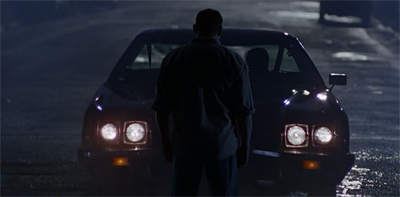






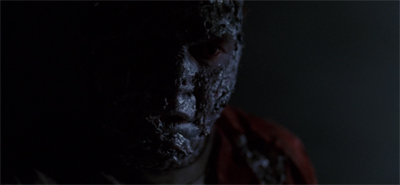



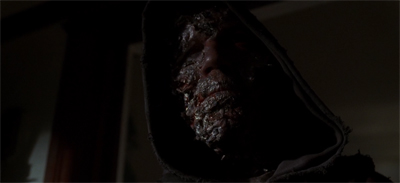
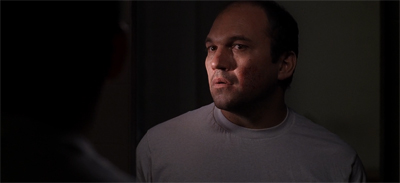


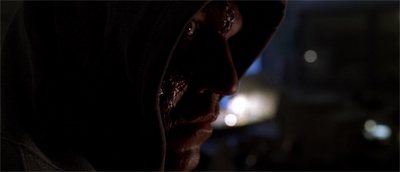









Leave a comment